How to calculate a heating pump: examples of calculations and rules for selecting equipment
A circulation pump is a small device whose main task is to improve the operation and increase the performance of the heating system. It cuts directly into the pipeline, optimizing the speed of movement of the coolant. Thanks to this, even a house with a large living space will heat up quickly enough.
To buy the optimal model, you have to figure out how to calculate a heating pump and what nuances to focus on when choosing. Our article is devoted to these issues - in this material we looked at an example of equipment calculations, paid attention to the principle of operation and the main types of pumps.
We also provided recommendations for the selection, installation and safe operation of pumping equipment, providing the article with visuals, photos and suitable videos with the calculation of the required power of the device and tips for its installation in the heating circuit.
The content of the article:
Operating principle and purpose of the pump
The main problem for residents of the top floors of apartment buildings and owners of country cottages is cold radiators.In the first case, the coolant simply does not reach their home, and in the second, the furthest sections of the pipeline are not heated. And all this is due to insufficient pressure.
When should a pump be used?
The only correct solution in a situation with insufficient pressure would be to modernize the heating system with coolant circulating under the influence of gravity. Installing a pump will help here. Basic schemes for organizing heating with pump circulation reviewed here.
This option will also be effective for owners of private houses, allowing them to significantly reduce heating costs. A significant advantage of such circulation equipment is the ability to change the speed of the coolant. The main thing is not to exceed the maximum permissible readings for the diameter of the pipes of your heating system in order to avoid excessive noise during operation of the unit.
Thus, for living rooms with a nominal pipe diameter of 20 mm or more, the speed is 1 m/s. If you set this parameter to the highest value, you can warm up the house in the shortest possible time, which is important when the owners were away and the building had time to cool down. This will allow you to get the maximum amount of heat with minimal time.
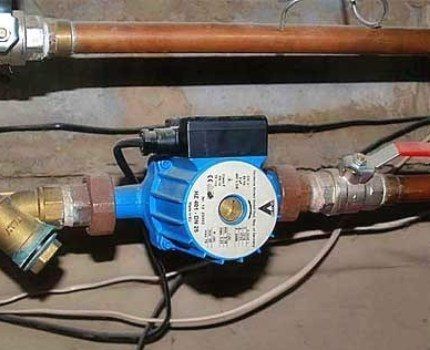
Operating principle of the device
The circulation unit operates using an electric motor. It takes heated water from one side and pushes it into the pipeline on the other. And from this side a new portion arrives again and everything repeats.
It is due to centrifugal force that the coolant moves through the pipes of the heating system.The process of operating a pump is a bit like the operation of a fan, only it circulates not air around the room, but coolant through a pipeline.
The body of the device is necessarily made of corrosion-resistant materials, and ceramics are usually used to make the shaft, rotor and wheel with blades.
Main types of heating pumps
All equipment offered by manufacturers is divided into two large groups: “wet” or “dry” type pumps. Each type has its own advantages and disadvantages, which must be taken into account when choosing.
Wet type equipment
Heating pumps, called “wet”, differ from their counterparts in that their impeller and rotor are placed in a thermal fluid. In this case, the electric motor is located in a sealed box, where moisture cannot enter.
This option is an ideal solution for small country houses. Such devices are characterized by their quietness and do not require careful and frequent maintenance. In addition, they are easy to repair, adjust and can be used at a stable or slightly varying level of water flow.

As for the disadvantages, the above category is characterized by low performance. This disadvantage is due to the impossibility of ensuring high tightness of the sleeve separating the coolant and the stator.
“Dry” type of devices
This category of devices is characterized by the absence of direct contact of the rotor with the heated water it pumps.The entire working part of the equipment is separated from the electric motor by rubber protective rings.
The main feature of such heating equipment is its high efficiency. But this advantage comes with a significant disadvantage in the form of high noise. The problem is solved by installing the unit in a separate room with good sound insulation.
When choosing, it is worth considering the fact that a “dry” type pump creates air turbulence, so small dust particles can rise, which will negatively affect the sealing elements and, accordingly, the tightness of the device.
Manufacturers solved this problem this way: when the equipment operates, a thin layer of water is created between the rubber rings. It acts as a lubricant and prevents the destruction of sealing parts.
Devices, in turn, are divided into three subgroups:
- vertical;
- block;
- console
The peculiarity of the first category is the vertical location of the electric motor. Such equipment is worth purchasing only if you plan to pump a large volume of thermal fluid. As for block pumps, they are installed on a flat concrete surface.
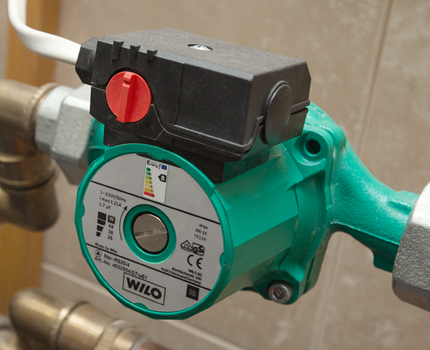
Console devices are characterized by the location of the suction pipe on the outside of the volute, while the discharge pipe is located on the opposite side of the body.
We talked in more detail about the design and operating principle of pumps In this article.
What to look for when choosing a pump?
The selection of a pump for autonomous heating should be done based on the hydraulic characteristics of the heating system of a country house. Therefore, before visiting the store, you will have to calculate the optimal amount of heat that will be required to maintain a comfortable temperature in the rooms.
Execute competently hydraulic calculation Additional information that you need to familiarize yourself with will help. Or you can take the advice of a competent specialist.
The optimal amount of heat for a particular object is influenced by many factors:
- material used for the construction and insulation of walls;
- climatic conditions;
- features of ceilings and floors;
- presence of thermostatic valves;
- characteristics of double-glazed windows installed in the cottage.
When choosing a pump for autonomous heating, special attention should be paid to the scope of application of a particular model, the number of speeds and noise level. The manufacturer and price of the equipment also play an important role.
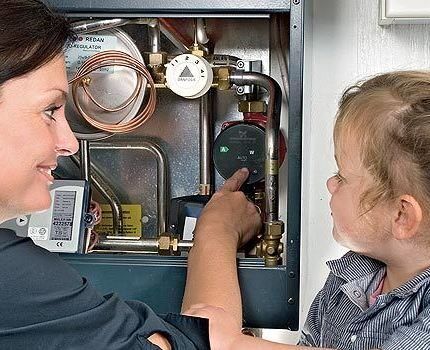
Criterion #1 - scope of equipment application
In most cases, experts advise installing heating pumps whose rotors are completely immersed in the coolant. Indeed, in addition to a low noise level, these types of units cope more successfully with high loads.
As a result, a system with “wet” equipment will last longer, be easier to repair, and will not require excessive attention.
Give preference to models that use durable steel and bearings, and the shaft is made of ceramic. Their advantage lies in their service life, which is at least two decades.
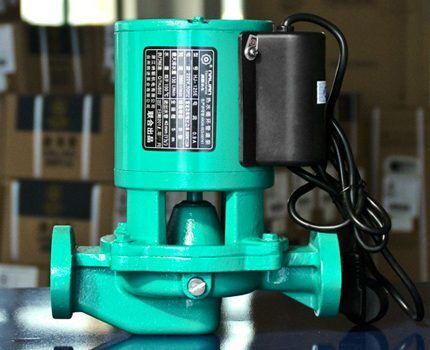
If the choice fell on a “wet” type heating pump, then you need to take into account that it should not be installed in the heating system of an open-type cottage. Indeed, in this case, the heated water that lubricates the mechanism contains various impurities.
For example, microparticles of sand can clog the gap between the rotor and stator, which will lead to rapid pump failure.
As for open systems, this kind of equipment can function in them for years. Moreover, it will not require any specialized maintenance.
Criterion #2 - calculation of optimal power
The performance of a pump designed to operate in a heating system can be calculated independently. To do this, you will need the total length of the pipeline through which the equipment will pump the coolant.
For every 10 meters of length we take 0.6 meters of device pressure. So, for a small house with a heating circuit length of 70 meters, you will need a pump with a pressure of 4.2 meters.
You can go the other way and calculate this indicator using the formula:
Q = 0.86*R/TF-TR,
Where:
- R — the room’s need for heat;
- TF And TR show the temperature of the coolant when supplied to the system and at its outlet, respectively. The values used are degrees Celsius.
In European countries, two values are predominantly used for the R parameter: 100 W/m2 - for a house with one or two apartments, and 70 W/m2 - for multi-apartment buildings.
The above method is just one of many ways to calculate the optimal power of a circulation pump. Only a qualified specialist can perform the most accurate calculations.
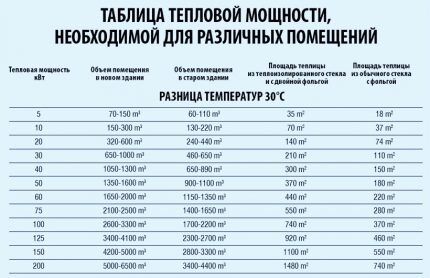
Criterion #3 - number of speeds and pump noise
The main feature of modern pump models is the ability to customize them. You can regulate the power by switching the speed of the unit.
Today, the most common models are those with three speeds. This allows you to heat living quarters as quickly as possible during a sudden cold snap, and in case of warming, reduce the performance of the device, thereby saving energy.
If you need to buy equipment that produces the lowest possible noise, then the best choice would be a “wet” type pump.
If you install a unit with a “dry” rotor, during its operation you will hear an extraneous sound resulting from the rotation of the fan cooling the electric motor. Therefore, it is better to install such a device in a separate room, and for a living room choose something less loud.
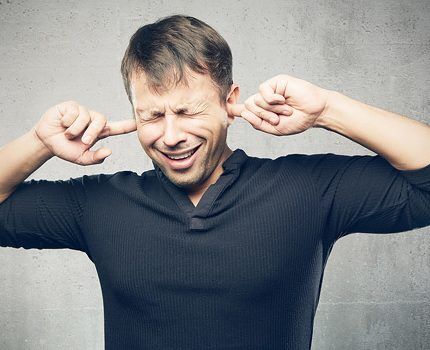
Extraneous noise that appears during startup does not always indicate a malfunction. Quite often this happens due to air remaining in the heating system.To resolve this issue, it is recommended that before starting deflate using special valves.
Criterion #4 - manufacturer and price of equipment
After all the necessary calculations have been made, you can begin to view the catalog with circulation pumps. It is better to place an order on those web resources that have a well-thought-out product filtering system. This will allow you to quickly find models with optimal characteristics.
The current market offers a wide selection of pumps for heating systems. Hundreds of manufacturers say their products are reliable, quality and durable. But the stated characteristics do not always correspond to the real ones. Therefore, it is better to order equipment manufactured by manufacturers who have made themselves known throughout the world.
The following brands should be added to the list of well-known and reliable companies producing pumps for heating systems:
- Halm;
- Wilo;
- Ebara;
- DAB;
- AlfaStar;
- Pedrolo;
- Grundfos.
The cost of units for organizing forced pumping of coolant completely depends on the power, type of pump and brand. Typically, the price of equipment ranges from $60 to $220. We recommend that you read top ten pumps for heating according to users.
As for domestic manufacturers, they do not produce household equipment, but offer only models intended for use for industrial purposes.
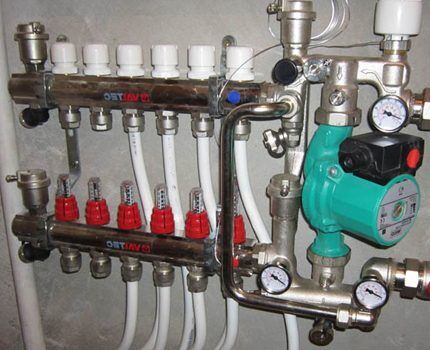
Features of installation of the circulation pump
To ensure efficient operation of the home heating system, you should choose the right place in the heating ring to install the equipment. It is recommended to find the area where excess water pressure is always observed in the coolant suction area. There are several methods by which this condition can be artificially achieved.
The first method is to raise the expansion tank by 0.8 m in relation to the highest section of the pipeline. This can only be implemented in a house where the ceilings allow it. A good solution would be to install an expansion tank in the attic. But in this case, you will have to start insulating the roof to avoid unnecessary heat loss.
The second method is to move a tube from the expansion tank from the supply riser and cut it into the place where the pump suction pipe is located nearby. Due to this, it is possible to create simply ideal conditions for organizing forced pumping of hot water in the home heating system.
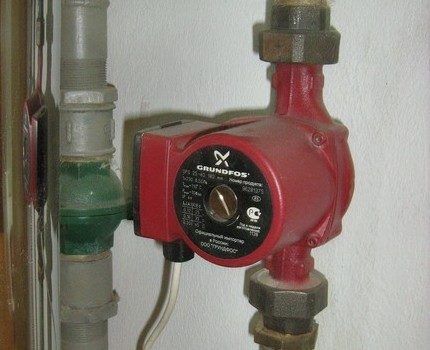
Detailed recommendations for installing the pump, a piping diagram and step-by-step installation instructions are provided. in the next article.
Rules and nuances of equipment operation
A circulation pump is not bought for a year or even two. Therefore, every owner of a country house must ensure that the equipment is in good working order for many years.Reliability and correct operation of the device can only be achieved through correct and timely maintenance.
The list of basic rules for operating a heating pump must include the following aspects:
- it is prohibited to turn on the device with zero supply;
- make sure that the equipment is grounded;
- make sure that the electric motor does not heat up above the permissible norm;
- check the connection in the terminal box for the presence/absence of damage, and all cables must be completely dry;
- make sure that there is no extraneous noise or vibration when the device starts;
- the equipment must operate at the coolant flow level recommended by the manufacturer;
- It is forbidden to run the circulation pump without water.
If the equipment is idle for a long time, it is recommended to turn it on for 10-30 minutes every month. This simple rule will help avoid oxidation and, as a result, shaft blocking.

Particular attention must be paid to temperature coolant. It should not exceed 60-65 degrees Celsius. If you neglect this rule, sediment will appear in the pipes and inside the pump, which will negatively affect the operation of the entire heating system.
Common breakdowns
The most common problem that causes equipment that provides forced pumping of coolant to fail is its prolonged downtime.
Most often, the heating system is actively used in winter, and is turned off during the warm season.But since the water in it is not clean, sediment forms in the pipes over time. Due to the accumulation of hardness salts between the impeller and the pump, the unit stops working and may fail.
The above problem can be solved quite easily. To do this, you need to try to start the equipment yourself by unscrewing the nut and manually turning the pump shaft. Often this action is more than enough.
If the device still does not start, then the only solution is to dismantle the rotor and then thoroughly clean the pump of accumulated salt deposits.
Conclusions and useful video on the topic
The video tells about calculating the performance of circulation equipment:
Correct installation is the key to excellent performance of any device. Features of installing a heating pump in the video:
A heating system where a pump is used to organize the movement of coolant has many advantages. But in order to install it accurately, you will have to spend a little time analyzing the nuances and choosing equipment. Only in this case can you make your home truly warm and cozy.
Do you want to add a pump to your heating system, but are unsure about the calculations? Ask your questions in the comments section - our experts will try to help you.
Or maybe you want to supplement our material with useful comments? Or suggest another option for calculating the heating pump? Write your comments and recommendations under this article.




I installed a standard circulation pump in the heating system. The house has a basement, so the entire main system is there. The device was installed in front of the boiler at a distance of 1 meter.It does not come into contact with heated water, so I don’t worry about the service life of the seals, rotor and bearings. The cooled coolant is pushed into the boiler by the pump, from where it enters the system in prepared form. When connecting, just take into account the fact that you need to install it correctly so that water is supplied in the desired direction (not in the opposite direction). It works quietly, almost inaudibly.
In fact, only power engineers use formulas for calculating power when designing large utility or industrial systems. For private houses, the selection is made based on experience, since there are few options there. The area of private houses does not vary much, usually 300-500 square meters, two floors (with an attic or basement). Simply take a pump that fits the diameter of the pipelines, and set the required power with the regulator.